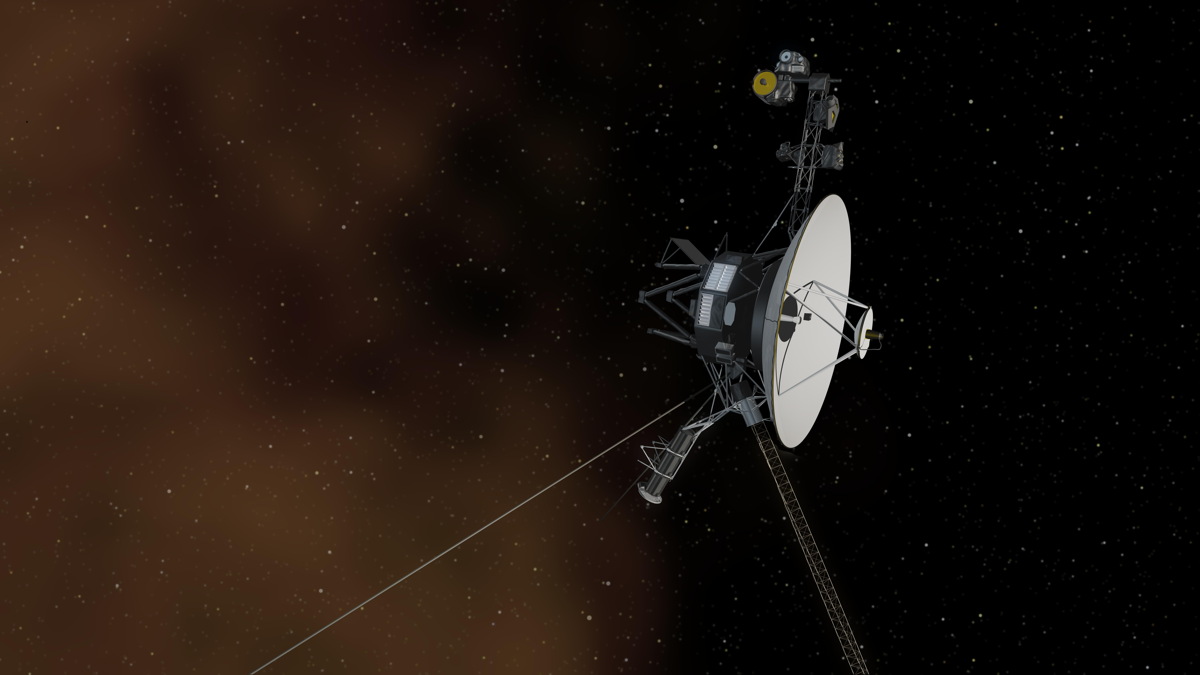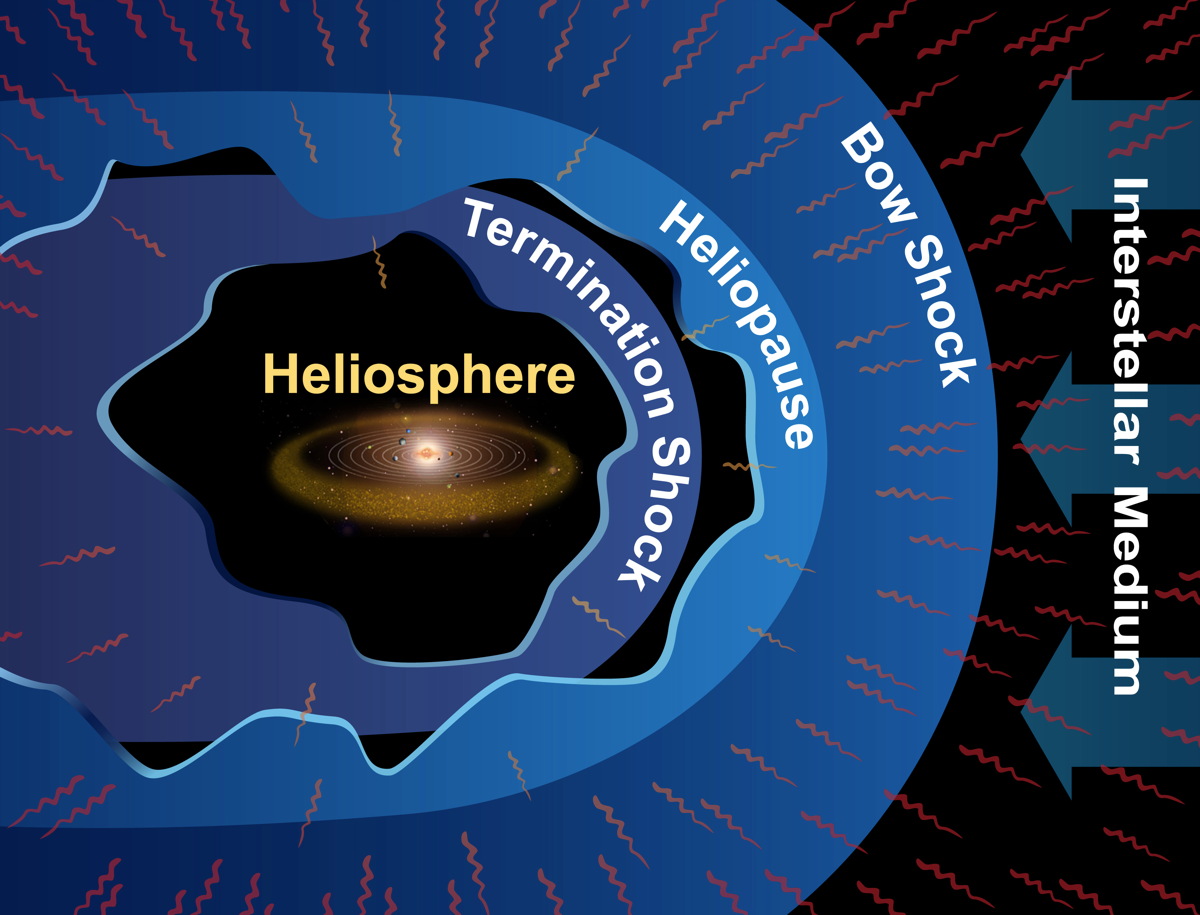Is Voyager 1 Really in Interstellar Space? New Test Could Prove It for Good

A new test could determine once and for all whether NASA's Voyager 1 probe has indeed entered interstellar space, some researchers say.
While mission team members declared last year that Voyager 1 reached interstellar space in August 2012, not all scientists are sold. Two researchers working with Voyager 1 have drawn up a test to show whether the spacecraft is inside or outside of the heliosphere — the bubble of solar particles and magnetic fields that the sun puffs around itself.
The scientists who came up with the test predict that Voyager 1 will cross the current sheet — a huge surface within the heliosphere — at some point within the next one to two years. When that happens, Voyager team members should see a reversal in the magnetic field surrounding the probe, proving that it is still within the heliosphere. If this change doesn't occur in the next two years or so, then Voyager is almost certainly already in interstellar space, researchers said. [Photo Timeline: Voyager 1's Trek to Interstellar Space]
"The proof is in the pudding," George Gloeckler of the University of Michigan, lead author of the new study detailing the test, said in a statement. "This controversy will continue until it is resolved by measurements."
Scientists have recently made measurements that seem to bolster the belief that Voyager is in interstellar space. Researchers measuring data from a solar eruption that shook the particles around Voyager 1 found that the density of the probe's surroundings was much higher than earlier measurements, when it was thought to be inside the heliosphere.
Because of this difference, some team members have come to the conclusion that Voyager 1 is, in fact, outside of the heliosphere. (While particle densities are higher in the inner solar system than they are in interstellar space, this is not the case at the extreme outer reaches of the heliosphere, scientists said.)
Voyager 1 has measured cosmic rays and other signs indicating that it may have passed into interstellar space, it still hasn't detected the predicted magnetic field change, Gloeckler pointed out. He expects that the polarity reversal may happen in 2015.
Breaking space news, the latest updates on rocket launches, skywatching events and more!
"If that happens, I think if anyone still believes Voyager 1 is in the interstellar medium, they will really have something to explain," Gloeckler said in the statement. "It is a signature that can’t be missed."
The developers of the new test think Voyager 1 is moving faster than the solar wind, meaning that it will cross over parts of the current sheet where the magnetic field reversal will happen. This data could prove that the probe is inside the heliosphere, according to a statement from the University of Michigan and the American Geophysical Union.
Other scientists working with Voyager also welcome the test.
"It is the nature of the scientific process that alternative theories are developed in order to account for new observations," Ed Stone, NASA's Voyager project scientist, said in a statement. "This paper differs from other models of the solar wind and the heliosphere and is among the new models that the Voyager team will be studying as more data are acquired by Voyager."
Voyager 1 and its twin Voyager 2 launched to space in 1977 to study the planets of the solar system. Voyager 2 is still in communication with Earth and is expected to continue on, potentially entering into interstellar space a few years from now.
The new test, detailed in a study by Gloeckler and his co-author Len Fisk of the University of Michigan, has been accepted for publication in the journal Geophysical Research Letters.
Follow Miriam Kramer @mirikramer and Google+. Follow us @Spacedotcom, Facebook and Google+. Original article on Space.com.
Join our Space Forums to keep talking space on the latest missions, night sky and more! And if you have a news tip, correction or comment, let us know at: community@space.com.

Miriam Kramer joined Space.com as a Staff Writer in December 2012. Since then, she has floated in weightlessness on a zero-gravity flight, felt the pull of 4-Gs in a trainer aircraft and watched rockets soar into space from Florida and Virginia. She also served as Space.com's lead space entertainment reporter, and enjoys all aspects of space news, astronomy and commercial spaceflight. Miriam has also presented space stories during live interviews with Fox News and other TV and radio outlets. She originally hails from Knoxville, Tennessee where she and her family would take trips to dark spots on the outskirts of town to watch meteor showers every year. She loves to travel and one day hopes to see the northern lights in person. Miriam is currently a space reporter with Axios, writing the Axios Space newsletter. You can follow Miriam on Twitter.

